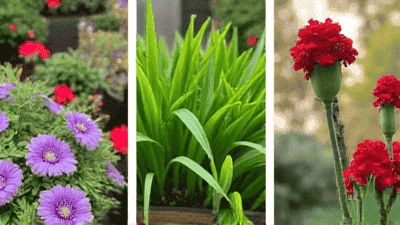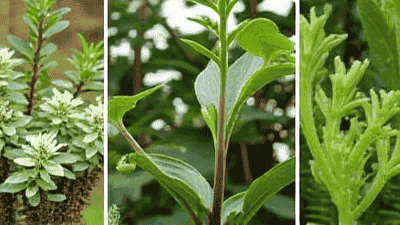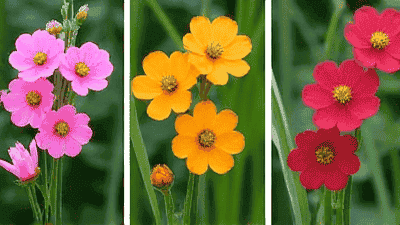
Creating a beautiful and thriving garden begins with the selection of plants that not only complement each other aesthetically but also thrive in harmony. The right combination of plants can enhance growth, improve biodiversity, and create a stunning visual display throughout the seasons.
Plant selection is more than just choosing your favorite flowers or shrubs. It involves considering various factors such as climate, soil type, sunlight, and water availability. Additionally, understanding the relationships between plants and their eventual growth habits is crucial for a successful garden design.
Climate Zone: Understanding your local climate zone is essential for selecting plants that will thrive. The United States Department of Agriculture (USDA) has established hardiness zones that can help gardeners choose appropriate plants based on temperature and climate conditions.
Soil Type: Different plants have varying soil requirements. Conduct a soil test to determine your soil's pH and nutrient levels, which will guide you in selecting plants that will flourish in your garden.
Sunlight Exposure: Observe how sunlight moves through your garden space throughout the day. Some plants require full sun, while others thrive in partial or full shade. Matching plant needs with sunlight availability is crucial for healthy growth.
Water Requirements: Assess the water needs of different plants. Grouping plants with similar watering needs can simplify maintenance and ensure that all plants receive adequate moisture.
Maintenance Requirements: Consider the level of maintenance you are willing to commit to. Some plants require regular pruning, deadheading, or pest management, while others are low-maintenance and more self-sufficient.

Creating successful plant combinations involves understanding several key principles. These principles help ensure that your chosen plants not only survive but also thrive together, enhancing the overall beauty of your garden.
Color is one of the most important aspects of garden design. Selecting plants with complementary colors can create a visually pleasing display that captivates the eye. There are several color schemes to consider:
Analogous Colors: Colors that are next to each other on the color wheel (e.g., blue, blue-green, and green) create a serene and harmonious effect.
Complementary Colors: Opposite colors on the color wheel (e.g., purple and yellow) create a vibrant contrast that draws attention.
Monochromatic Colors: Using different shades of a single color can create a sophisticated and cohesive look.
Incorporating plants with varying textures can add depth and interest to your garden. Mixing fine-textured plants, such as ferns and ornamental grasses, with coarse-textured varieties, like broadleaf evergreens, creates a dynamic visual appeal.
Choosing plants that offer different blooms throughout the year ensures that your garden remains vibrant and engaging in every season. Layering plants with varying bloom times creates continuous interest and aesthetic appeal.
When designing your garden, consider the height and structure of plants. Taller plants or shrubs should be placed at the back of borders, with medium-height plants in the middle and shorter plants in the front. This arrangement ensures that sunlight reaches all plants and enhances visibility.
Companion planting is the practice of growing certain plants together for mutual benefit. Some combinations can enhance growth, deter pests, or improve flavors in edible gardens. For example, planting marigolds alongside vegetables can reduce pests, while rosemary can enhance the flavor of nearby beans.
Now that we have established principles of plant selection, let's explore the best combinations for various garden types, including flower gardens, vegetable gardens, and ornamental landscapes.
Flower gardens can showcase a vibrant palette and attract pollinators while adding beauty to your outdoor space. Below are some suggested combinations for creating stunning flower gardens.
A cottage garden is characterized by an informal design filled with a mix of flowering plants. Ideal plants for this style include:
Attracting pollinators such as bees, butterflies, and hummingbirds is essential for a healthy garden ecosystem. Key plants to include are:
Gardens with limited sunlight can still flourish with shade-tolerant plants. Consider these combinations:
Vegetable gardens can thrive when plants are selected based on their compatibility. Here are some successful combinations:
Raised bed gardens are a great way to organize your vegetable plants. Consider these combinations for a raised bed layout:
Creating an ornamental landscape allows for a diverse range of plants that enhance the aesthetics of your property. Here are some effective combinations:
Foundation planting refers to the arrangement of plants around the base of a home. Consider low-maintenance combinations such as:
Rock gardens can create unique landscapes featuring drought-tolerant plants. Successful combinations include:

To create a garden that looks great year-round, consider selecting plants that provide visual interest in every season. Here are some suggestions for seasonal planting:
To ensure your plant selection is successful, consider these practical tips:
Research Plant Characteristics: Before introducing a plant to your garden, research its growth habits, native conditions, and potential invasiveness.
Mix Annuals and Perennials: By incorporating both annual and perennial plants, you can create a dynamic garden that blooms throughout the seasons.
Visit Local Nurseries: Local nurseries often carry plants that are well suited for your region's climate and soil conditions. Ask staff for advice on the best combinations for your garden.
Consider Plant Maturity: When selecting plants, consider their mature size and spread to avoid overcrowding. Always give plants room to grow for optimal health.
Use Companion Planting Guides: Utilize companion planting guides to discover beneficial plant combinations that support healthy growth and pest deterrence.

Selecting the best combinations of plants for your garden involves thoughtful planning and consideration of various factors. By understanding climate, soil type, sunlight, and plant compatibility, you can create a flourishing garden that is not only beautiful but also functional. Whether you are creating a vibrant flower garden, a productive vegetable plot, or an ornamental landscape, careful plant selection will enhance your enjoyment and success in gardening.
As you embark on your gardening journey, remember to experiment with different combinations, learn from your results, and embrace the joy that gardening brings. With each season, your garden will evolve, providing you with endless opportunities for creativity and connection to nature.